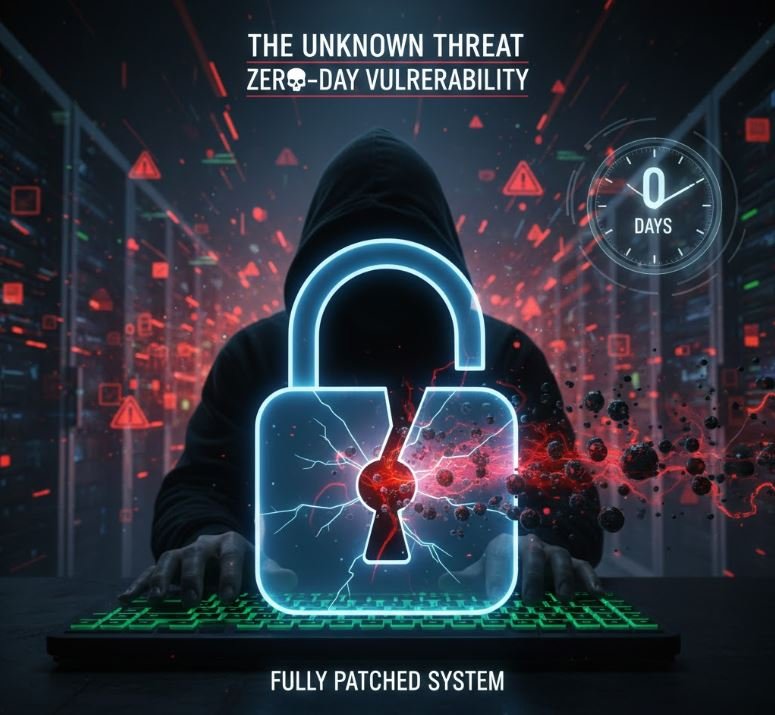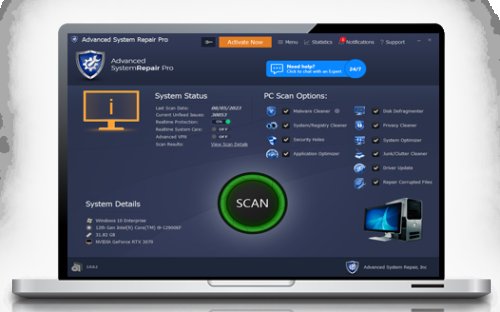Security Implications of Zero-Day Vulnerabilities
A Zero-Day Vulnerability is a software security flaw that is unknown to the vendor and for which no patch or fix exists. The term "zero-day" refers to the fact that developers had zero days to address the issue after it was discovered and exploited by attackers. The security implications of these vulnerabilities are severe because they give attackers a significant, stealthy advantage.

Zero-day threats are among the biggest risks in cybersecurity. They occur when a vulnerability—in this case, meaning a security flaw or weak point in software or hardware that is unknown to the vendor or developers—is exploited to gain access. They are named as such because the vendor or developer has zero days to fix the flaw since attackers can already use the exploit to attack vulnerable systems. There are three key concepts in a zero-day threat:
- Zero-day vulnerability: The weak point that can be exploited. These vulnerabilities can be in software, hardware, or even cloud services. They are unknown to development and vendor teams, leaving them unpatched and vulnerable to attack.
- Zero-day exploit: The method or technique used by attackers to take advantage of a zero-day vulnerability. Zero-day exploits include practices such as injecting malicious code, disrupting operations, or gaining unauthorized access.
- Zero-day attack: The ultimate act of using a zero-day exploit to compromise a system or network. Common attacks include stealing data, installing malware, or disrupting services.
Zero-day threats are especially dangerous because of their unpredictable nature. Since they target unknown vulnerabilities, it is difficult to anticipate or protect against them. Zero-day vulnerabilities often have little to no protection. Some attack methods may be detected by existing countermeasures, but they often slip past defenses. They also have the potential to cause significant damage if they are not detected early in the lifecycle. If attackers gain deep access to systems, they can steal sensitive data and cause widespread disruption. Finally, it takes time to patch vulnerabilities once they are detected, leaving the door unlocked for attackers to exploit the same vulnerability multiple times.
Security Implications of Zero-Day Vulnerabilities
The term "Zero-Day" refers to the fact that the software vendor has had "zero days" to fix the flaw because they were unaware of its existence when the attack (the "exploit") was launched.
1. The Undetectable Threat (The "Blind Spot")
- Bypassing Traditional Defenses: Most traditional security tools (like signature-based Antivirus) work by detecting patterns or signatures of known malware. Since a zero-day exploit is brand new, it has no known signature, allowing it to bypass these established defenses completely.
- The Unknown Window: The period between when an attacker first discovers and uses the flaw and when the vendor finally releases a patch is an unknown window of vulnerability. This period can last for days, weeks, or even months, leaving all users of that software or operating system completely exposed.
- Targeting Fully Patched Systems: Zero-day attacks are unique because they can successfully compromise systems that are otherwise fully up-to-date and considered secure. Patches only fix known problems; a zero-day attack uses an unknown one.
2. High-Impact Attack Potential
- Remote Code Execution (RCE): Many zero-day exploits allow an attacker to achieve Remote Code Execution (RCE). This means the attacker can run their own malicious programs or commands on your computer from a remote location, effectively taking control of the system.
- Espionage and Advanced Persistent Threats (APTs): Because of their high value and stealth, zero-day exploits are often reserved for highly targeted, high-stakes attacks. They are frequently used by nation-state groups and Advanced Persistent Threats (APTs) to infiltrate governments, critical infrastructure, and major corporations for long-term espionage or sabotage (e.g., the Stuxnet worm).
- Widespread Impact: If the flaw exists in widely used software (like a major operating system, web browser, or critical open-source library like Log4j), a single zero-day exploit can be weaponized to compromise millions of computers and servers worldwide very quickly.
3. The Black Market for Flaws
- High Financial Value: Knowledge of a zero-day vulnerability is extremely valuable and is often traded on the dark web for substantial amounts of money. This black market creates a financial incentive for attackers to find and keep these flaws secret, delaying public disclosure and patching.
- Profit for Attackers: Attackers who acquire these flaws can use them to deploy lucrative attacks, such as highly effective initial access for ransomware campaigns or the theft of valuable intellectual property (IP) and trade secrets.
Primary Security Implications of Zero-Days
1. Zero Defense Window
The most critical implication is the lack of any available defense at the time of the attack.
- · Undetectable: Since the vulnerability is unknown, traditional security measures like signature-based antivirus or Intrusion Detection Systems (IDS) have no rules or signatures to look for, allowing the exploit to bypass them.
- · Unpatchable: By definition, there is no vendor patch available, leaving all systems running the affected software completely exposed until the vendor becomes aware, develops a fix, and distributes it.
2. High-Impact and Targeted Attacks
Zero-day exploits are valuable tools that are often reserved for high-stakes operations.
- · Targeted Exploitation: Threat actors (including nation-states and sophisticated cybercrime groups) often use zero-days for highly targeted attacks on high-value assets, such as government agencies, critical infrastructure, financial institutions, and large corporations, to steal intellectual property or conduct espionage.
- · Privilege Escalation & System Takeover: Successful exploitation can grant the attacker unauthorized access, allowing them to install malware, steal sensitive data, gain administrator privileges, or completely compromise the target system.
3. Financial and Reputational Damage
The consequences of a successful zero-day attack are often catastrophic.
- · Significant Costs: Organizations face huge expenses related to incident response, forensic investigation, system remediation, and the recovery of stolen data.
- · Legal & Regulatory Fines: Breaches involving sensitive customer data can lead to massive fines under regulations like GDPR or HIPAA.
- · Erosion of Trust: A high-profile data breach due to an unknown flaw can severely damage a company's reputation and lead to a loss of customer and investor trust.
4. Widespread Impact via the Cybercrime Market
Zero-days have a high monetary value, fueling the underground cybercrime economy.
- · Commercialization: Vulnerabilities are sold on the dark web for extremely high prices, often to the highest bidder, including various cybercriminal groups.
- · Weaponization: Once an exploit is available, it can be quickly integrated into exploit kits or ransomware campaigns, allowing less sophisticated attackers to launch widespread attacks against a large number of victims simultaneously.
Mitigation Strategies for Zero-Days
Since you can't patch an unknown vulnerability, defense relies on layers of security that focus on detection and limitation:
Strategy: Principle of Least Privilege (PoLP)
Description: Restrict the permissions of user accounts and applications to the bare minimum required.
Implication: If an attacker exploits a zero-day, they are limited to the low privileges of the compromised user, preventing them from taking full control (admin rights) of the computer.
Strategy: Micro-Segmentation
Description: Dividing a network into small, isolated security zones.
Implication: If one computer is compromised via a zero-day, the attacker cannot easily move laterally (lateral movement) to infect other systems on the network.
Strategy: Behavioral Detection (Next-Gen AV)
Description: Using Machine Learning and AI to monitor a program's behavior instead of its signature.
Implication: Even if the exploit code is unknown, the actions it takes (e.g., attempting to modify system files or encrypt documents) can be flagged as anomalous and blocked in real time.
Strategy: Application Whitelisting
Description: Only allowing pre-approved programs to run on the computer.
Implication: An attacker's new, malicious code (the exploit payload) cannot run because it is not on the approved list.
Zero-day vulnerabilities represent the ultimate "unknown unknown" in computer security.
These must be used in combination because no single strategy provides absolute protection against zero-day attacks. Ensuring a strong security posture is key, but there is no perfect solution to zero-day threats.
Share
What's Your Reaction?
 Like
0
Like
0
 Dislike
0
Dislike
0
 Love
0
Love
0
 Funny
0
Funny
0
 Angry
0
Angry
0
 Sad
0
Sad
0
 Wow
0
Wow
0













